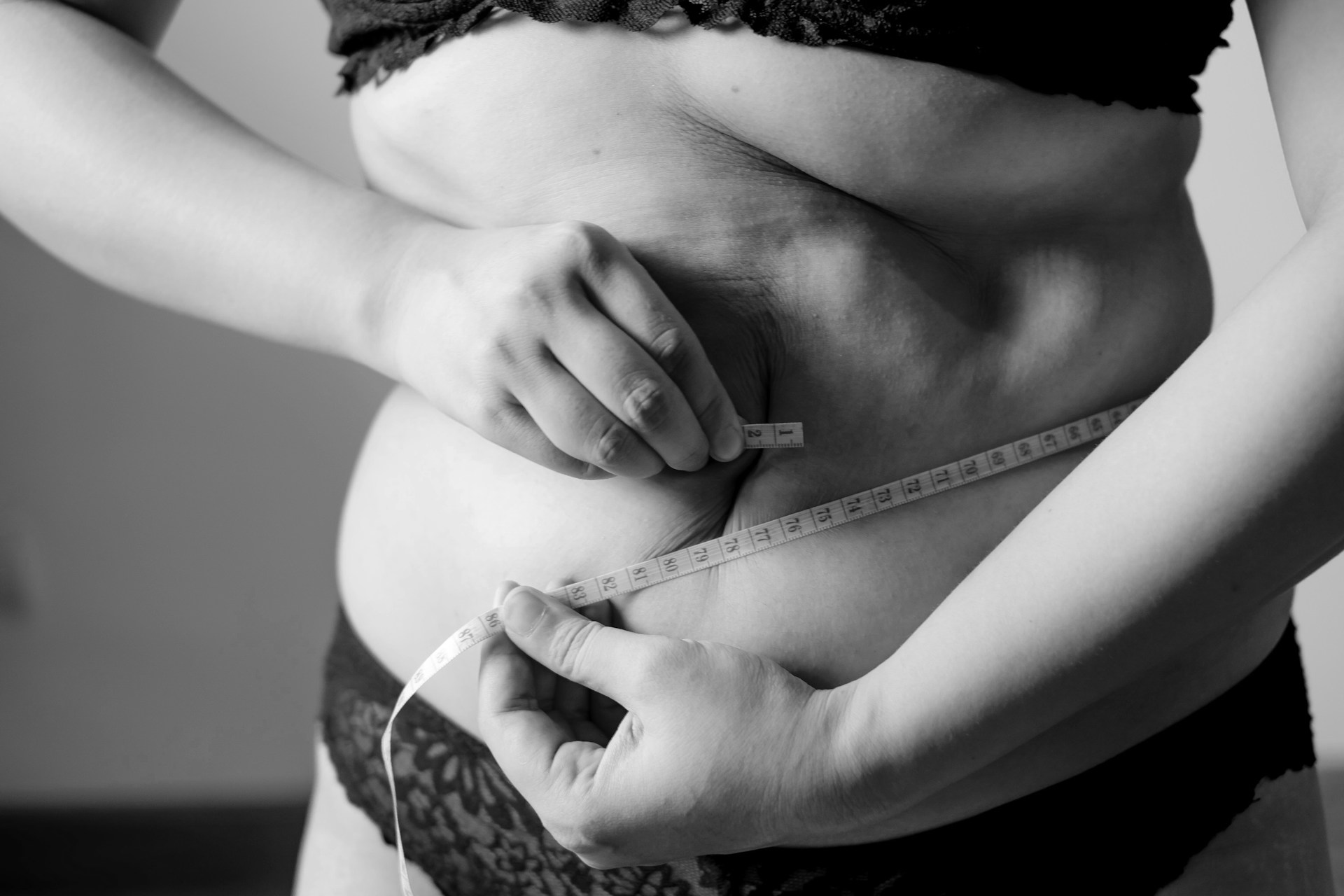Overweight and obesity plague our nation, and the statistics are getting worse each year. Regardless of the underlying causes of this health-related crisis, people must become more aware of how an unhealthy weight can affect their health. They need to be aware that many of their lifestyle choices have a direct impact on their risk of developing serious conditions such as type 2 diabetes, high blood pressure, coronary issues, and more.
The number on the scale is one way to monitor a healthy weight, but an individual's BMI and body fat percentage are also important measurements. Today we are going to look at these other important health indicators, how they are determined, and what they mean. We will also talk about the difference between what body fat percentage is obese and how this measurement is calculated differently between the genders.
{{cta_button}}
What Does It Mean To Be Obese And How Is It Determined?
Some seem to be able to eat whatever they want, never deliberately exercise, and never put on any weight, and then there are the rest of us. Some of us never gave our weight a thought when we were younger, but then, what seemed like all of a sudden, we noticed we had collected some extra padding here and there. Other people may struggle with weight fluctuations their whole life.
At what point should you start to worry that your weight gain will affect your physical health? Let’s take a look at the definition of obesity vs what it means to be overweight.
- Overweight is when a person is carrying more weight on their body than is considered healthy;
- Obese is when a person is carrying excess weight and has an excessive amount of body fat that is harmful to their health.
These two distinctions are determined using a few different methods. The standard BMI chart and the percentage of fat you have on your body.
Body Fat vs BMI: How Do The Measurements Of Obesity Differ?
Body Mass Index (BMI)
In the 1800s, there was a need for a quick and easy way to put individuals into categories according to their health status or how at risk they were for developing health problems. A Belgian math and astronomy professor came up with the Quetelet Index, which used a standardized equation based on the individual's height and weight as the criteria for the category they fit into. This is now known as the standard BMI scale that is used by doctors, insurance companies, and medical professionals as criteria for many medical procedures and more.
Percentage Of Body Fat
The amount of body fat you are carrying in relation to your whole body weight is another indicator of your health. A certain amount of body fat is needed so your body can function the way it was designed to, so having too much or too little body fat can lead to health issues.
Body fat is necessary for the production of hormones, the regulation of your body temperature, and padding for your vital organs, but having too much body fat is harmful. It can lead to excess estrogen production that contributes to several women’s health concerns, stroke, hypertension, cancer, diabetes type 2, complications during pregnancy, infertility, and more.
{{cta_small}}
Which Measurement Is More Accurate?
When comparing the differences between an obese BMI level and what body fat percentage is obese, the more important and accurate reading is how much body fat you possess, and here’s why.
Body Mass Index (BMI)
BMI is calculated using your height and weight, and that is it; there is no taking into account your bone density or your muscle mass.
The standard BMI ranges are as follows:
- Underweight BMI < 18.5;
- Healthy weight Range between 18.5 and 24.9;
- Overweight Range between 25 and 29.9;
- Moderately obese (Class 1) Range between 30 and 34.9;
- Severely obese (Class II) Range between 35 and 39.9;
- Morbidly obese (Class III) 40 or higher.
According to these standard BMI ranges, most of the NFL football players would be classified as obese but this would not be accurate. For example, according to published statistics:
- Bobby Wagner of the Seattle Seahawks is 6 feet tall and weighs 242 pounds. His BMI is 32.8, which is classified as obesity class 1;
- Dak Prescott of the Dallas Cowboys is 6’2” and weighs 238 pounds, which gives him a BMI of 30.55 which falls into the obesity class 1 category.
Athletes such as football players and those who have a higher concentration of muscle and less fat have a healthier body composition because muscle is heavier than fat and it speeds up the rate of calorie burn even when they are stationary. Since the BMI scale does not take this or other elements such as age, ethnicity, or gender into consideration, the numbers can be inaccurate.
Percentage of Body Fat
The percentage of body fat a person has is harder to discern because it involves more than just a simple calculation but it is a more accurate measurement of their overall health. These numbers can be relied upon and are more accurate because they consider age, gender, and actual body measurements.
Obese Body Fat Percentage Chart
<div class="table-wrapper"><table class="iksweb"><tbody><tr><th>Age Range</th><th>Inadequate Fat</th><th>Healthy Fat Ideal</th><th>Over Fat Overweight</th><th>Excessive Fat Obese</th></tr><tr><td colspan="5">Women</td></tr><tr><td>20-39</td><td>< 21%</td><td>21-32%</td><td>33-39%</td><td>>39%</td></tr><tr><td>40-59</td><td>< 23%</td><td>23-34%</td><td>35-40%</td><td>>40%</td></tr><tr><td>60-79</td><td>< 24%</td><td>24-35%</td><td>36-42%</td><td>>42%</td></tr><tr><td colspan="5">Men</td></tr><tr><td>20-40</td><td>< 8%</td><td>9-20%</td><td>21-25%</td><td>>25%</td></tr><tr><td>41-60</td><td>< 11%</td><td>12-22%</td><td>23-28%</td><td>>28%</td></tr><tr><td>61-79</td><td>< 13%</td><td>13-24%</td><td>25-30%</td><td>>30%</td></tr></tbody></table></div>
Body Fat Measurements Can Be Done Different Ways
The most accurate ways to determine the percentage of body fat are not easily accessible. The DEXA (dual-energy x-ray absorptiometry) is done using an x-ray machine and can calculate bone density, muscle mass, and fat. The hydrostatic method is where the patient is submerged in water, and the level of water displacement is measured to indicate body fat percentage. Similar to hydrostatic measuring, the Bod Pod method uses air displacement to assess the percentage of body fat an individual has. While these are the most precise ways to calculate body fat, they are not always readily available, and these tests may be expensive.
The most often used methods for getting as close to accurate as possible in measuring the percentage of body fat without all the fancy equipment include:
The Caliper Method
Three different sections of your body are used to take readings of how much skin can be pinched in that area with a pair of skin calipers. It can be inefficient for exceptionally large individuals, and numbers can vary depending on the person doing the measuring, but it is an inexpensive and fast way to get a general idea of where you stand.
The Navy Way
The U.S. Navy developed its way of determining the percentage of body fat and detecting obesity using a simple measuring tape. Men and women are measured in slightly different areas, but in general, measurements are taken of the waist, neck, and around the hips. Then these measurements are used in a formula to determine the percentage of body fat.
Reducing Body Fat
Everyone is different, and their body may not respond the same way when exposed to weight loss initiatives as someone else's; however, lowering their total body weight by even 5% can reduce their percentage of body fat enough to significantly impact their health. This is true because the type of fat (visceral) that attaches to vital organs and creates health concerns is normally the first to go.
Lowering Your Percentage Of Body Fat
There is no magic formula for lowering your body fat percentage, and losing weight is the key. The basic principle of weight loss is consistently eating fewer calories than you burn each day. Eating a diet that is balanced and primarily contains foods that are healthy and unprocessed, as well as getting enough physical activity, are the standard ways of accomplishing weight loss.
For many, these standard methods are just not enough, and they require some additional assistance. Some turn to bariatric surgery and procedures like gastric sleeve and gastric bypass. Both require drastic changes to the individual's digestive system and come with risks, complications, and long recoveries.
If your percentage of body fat is considered obese and you have tried traditional means to lose weight and are tired and frustrated, Batash Endoscopic Weight Loss Center can help. We offer safe and effective options to help with sustainable weight loss that do not require surgery. You can lower your BMI and your body fat percentage with the help of Suture Sculpt ESG or an intragastric balloon. Sometimes, using prescription weight loss injections along with one of these options can provide amazing results.
Set up an appointment with us today to find out your options to reduce your percentage of body fat and become more fit and healthy. Our team of experts will provide you with everything you need, along with unprecedented support to help you reach your goals.
{{cta_button}}








